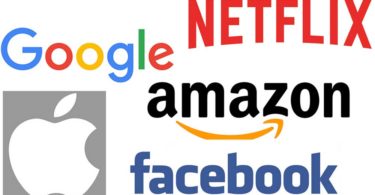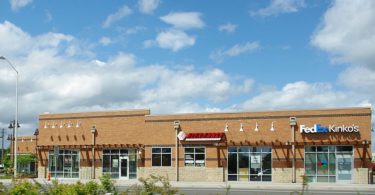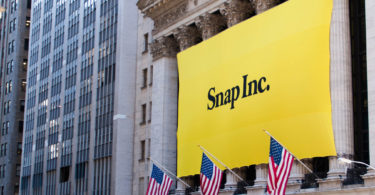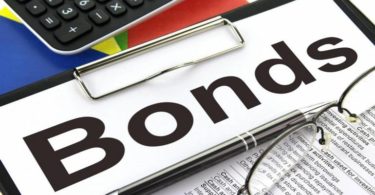Shares of Tesla (NASDAQ:TSLA) have had such a good year in 2020 that the company is now worth over $400 billion, more than many major automakers combined. Different investors have different theses on why Tesla is so valuable, ranging from the company being a high-growth, high-margin auto stock to its future as an autonomous driving company with software-level margins. But the one theme is that there's a future for Tesla that's much bigger and more impactful than where it is today.
When a stock rises like Tesla's has, it puts a lot of pressure on the company to keep growing to meet investor expectations. But there are flaws in some of the growth theories, and there's one upstart in particular that Tesla should worry about in 2021: Cruise, the General Motors (NYSE:GM) majority-owned autonomous driving company. 
IMAGE SOURCE: CRUISE.
Breaking down Tesla's growth thesis
Let's look at the three ways that investors commonly think Tesla will disrupt the auto industry. These theses come from ideas that Elon Musk has stated himself and the long-term vision he has for Tesla. But they each have flaws.
Thesis 1: Tesla the robotaxi company
Let's start with the idea that has often been cited as a reason Tesla is incredibly valuable: its ability to build a robotaxi company. The idea of Tesla as a robotaxi operator has been around for years. Musk has teased the idea, suggesting that Tesla owners could send their vehicles out to work as taxis for 100 hours a week. He's even suggested that the service would make a Tesla worth up to $250,000.
This is far-fetched on multiple levels. The first long shot is that Tesla owners who spend $50,000 and up on their vehicles will send them out unsupervised to pick up riders for hundreds of hours per week. Not only would there be wear and tear on the vehicle, but also who knows what people will do in someone else's vehicle unsupervised. It seems extremely unlikely that well-heeled Tesla owners would want to risk that investment to make a few bucks with a robotaxi service.
The other gap in this concept is that Tesla doesn't have self-driving ability today. Its Autopilot is a smart cruise-control option for highways, but it's not capable of driving a car for miles upon miles by itself. In fact, Cruise has put more fully autonomous miles on the road than Tesla. According to data provided to California, where both companies are based, Cruise vehicles drove 831,040 miles autonomously in 2019, compared with 12.2 fully autonomous miles for Tesla. You read that right: Cruise drove 68,118 times more autonomous miles on California roads than Tesla.
If self-driving ridesharing, or a robotaxi service, is going to be commonplace and economical, it makes much more sense to use a purpose-built vehicle with dedicated charging infrastructure rather than expect car owners to lend out their vehicles to the service. That dedicated service is exactly what Cruise is creating with the Cruise Origin. 
THE CRUISE ORIGIN RIDESHARING VEHICLE. IMAGE SOURCE: CRUISE.
Thesis 2: Tesla the software company
Another option would be to sell Tesla's autonomous driving technology to other manufacturers or even to Tesla customers. In effect, this could be a software-as-a-service model.
The problem here is that Tesla is not the company most manufacturers would use to power a self-driving fleet or self-driving functions on consumer vehicles. It relies primarily on vision to detect how to drive a vehicle, while most companies are adding redundancies like laser-powered LiDAR so the vehicle can drive in rain, snow, and even “see” objects that may blend into the background. That inability was the cause of a 2016 fatal accident involving a Tesla in Florida.
There are also companies better suited to provide this technology to auto companies. According to management consultant Navigant's assessment of autonomous driving technology, Alphabet's (NASDAQ:GOOG) (NASDAQ:GOOGL) Waymo, Ford (NYSE:F) Autonomous Vehicles, and Cruise are all rated far more highly than Tesla. In fact, there are more than a dozen companies that are rated to have better autonomous-driving technology than Tesla.
Third-party sales seem highly unlikely given the number of companies building this technology and the incentive they all have to beat Tesla.
Selling to Tesla customers may seem attractive, but again the market seems limited. Tesla recently increased its “full self-driving” option to $8,000, and Musk has said the value of the package will eventually be over $100,000. Currently, the package isn't fully autonomous at all, but rather a limited self-driving package.
Again, if self-driving is the value for Tesla, wouldn't it make more sense to build a fully autonomous vehicle? And if you're going to build a fully self-driving vehicle, why not share that vehicle's costs among hundreds or thousands of people to reduce travel costs for everyone rather than delivering a package that makes vehicles more expensive for customers?
Thesis 3: Tesla the best manufacturer in the world
The final bullish thesis that may hold some water is the idea that Tesla will win simply as an EV maker. And that could be right. It has a multiyear lead on the entire industry, and it's built a dealer network that allows it to capture more value from each sale, increasing margins.
What I question is how long that lead will last. Sure, legacy automakers like GM (NYSE:GM), which owns most of Cruise, and Ford may have a hard time catching up to Tesla, but they're trying, with new EV offerings like the Chevy Bolt and Ford's recently announced all-electric F-150.
An even bigger worry might be the all-electric vehicle companies popping up. Rivian, NIO, Nikola, and Lucid Motors are just a few of the manufacturers that have appeared in the last decade. They aren't anywhere near Tesla's scale, and most are still building out manufacturing capability, but they are all EV from the ground up. That will eat away at some of Tesla's inherent advantages over traditional automakers.
Tesla hasn't yet become the world-class manufacturer it hoped to be, battling quality issues to this day. Traditional and start-up automakers could make products that are just as compelling and even higher quality. The world-class, high-margin manufacturer thesis may be short-lived for Tesla.
How Cruise could leapfrog Tesla
The biggest problem I see with Tesla is that it isn't best positioned in the area it sees as most valuable: autonomous driving.
While Tesla is taking small steps toward building its fully autonomous driving system, Cruise is making full autonomy a reality. Elon Musk has been promising full autonomy for years but hasn't delivered. Cruise is set to do so with a ridesharing service in San Francisco, one of the most difficult driving environments in the world, as early as next year.
What's crucial about this autonomous driving lead is that Cruise has the business model behind it. Tesla is still selling cars to people who intend to own them for years or even decades, and it hopes to tack high-margin autonomous software onto the purchase. Cruise is disrupting the vehicle ownership model altogether. You can see that with the design of the Cruise Origin, which is meant to be a vehicle in which people sit together and socialize while going from point A to point B. No up-front cost, garage space, charger installation, or searching for charging stations on a long trip — just get in and get out.
Designing a vehicle for full autonomous ride-hailing allows Cruise to cut out bells and whistles that add costs for Tesla. Fast acceleration isn't needed, nor are color options or fancy rims. Designs can be simple, efficient, and repeatable. And Cruise has said that the Origin will be designed to drive over 1 million miles.
Cruise is what Tesla wants to be
Elon Musk and Tesla certainly think fully autonomous driving is the future, and they've been teasing the technology in their vehicles for years. But Cruise is thus far well ahead in the technology, as are competitors like Waymo.
But the biggest reason Tesla should be worried about Cruise in 2021 is the launch of the Cruise Origin and its ridesharing service. If it's successful, autonomous ride-hailing could make vehicle ownership obsolete for hundreds of millions of people around the world. And whether we're talking about a physical product or self-driving software, selling cars is ultimately where Tesla makes its money.
Innovation and disruption can take many forms, and I think the disruption coming for Tesla is in the form of a company built to make car ownership obsolete. Cruise fits the bill, and 2021 will be a big year for the company trying to change transportation forever.
Bonus: “Tesla Killer” Launches 90,900% Market Surge
I’m here 3,000 miles from home in Long Beach, California.
This industrial suburb looks nothing like Silicon Valley, but recently it’s become the epicenter of an explosive new technology.
One that’s taking the $2.5 trillion electric vehicle market by storm.
It charges in just minutes — not hours. It’s 100% emission-free, costs next to nothing, and involves no fossil fuels. The only thing it emits is pure, clean water.
This is why experts call this technology the “Tesla Killer.”
I came here to try it for myself and see if all these claims were true.
And incredibly enough, the “Tesla Killer” worked better than I imagined.
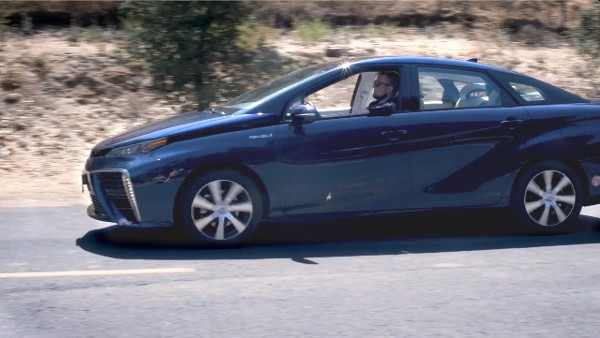
The car took moments to fill and drove like a dream along the California coast, lasting hundreds of miles.
I’m now certain that no Tesla could possibly compete with it.
That’s why Bloomberg projects it to “skyrocket 1,000 times over.” And best of all…
The tiny, little-known stock behind the “Tesla Killer” trades for just a few bucks.
Don’t wait another moment.
Now you can lock in its shares at a few dollars, instead of around a few hundred dollars like Tesla.
Click here for the full story.



